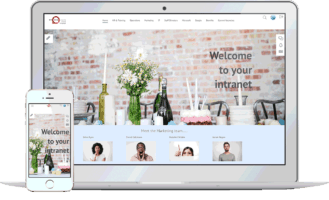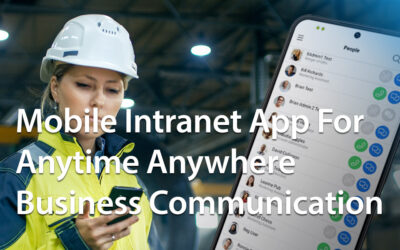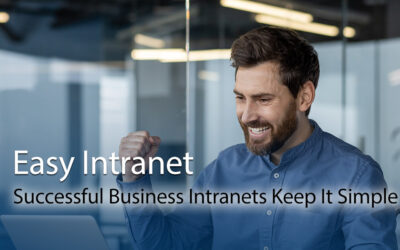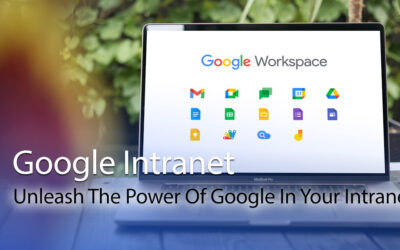No doubt you are already familiar with B2C (business-to-consumer) as well as B2B (business-to-business) marketing. Well, there’s a new kid on the block: B2E or business-to-employee (B2E) marketing.
The focus within B2E is about attracting and retaining the best staff in a super-competitive market, and how employers can provide a supportive and encouraging employee experience.
In this post, we explain all you need to know about B2E, why it’s important, and the technology that can help.
What Is B2E?
Business-to-employee is the activities, digital workplace systems, and processes employers have in place to attract, retain, and engage their staff.
B2E covers initiatives such as recruitment and retention policies, on-boarding, and professional development opportunities, as well as employee wellness initiatives. Internal communications and employee engagement are essential elements within this. However, it’s also about having digital platforms in place so workers can get the job done more efficiently and effectively.
A broad term, B2E encompasses any operational activity where the employee is the central focus.
Why Is Business To Employee Marketing Important?
Richard Branson famously once said that customers come second and employees first. And there’s a wealth of evidence confirming the vital link between engaged employees and happy customers. A compelling B2E strategy, therefore, will have a knock-on effect in terms of B2C or B2B marketing. Workers who feel invested in the company and identify strongly with its vision and values deliver superior customer service. And so, a B2E strategy will support high levels of customer or client satisfaction. It will enhance your brand reputation. And it will positively impact on profits as well as your competitive advantage.
Furthermore, attracting and retaining the best talent is more challenging in today’s competitive and increasingly globalized marketplace. Nowadays, employees are changing jobs more frequently than ever before. Data from the Bureau of Labor Statistics tells us that the median number of years employees have worked for their current employer is now just 4.6 years. Moreover, the average tenure of workers aged 25 to 34 is only 2.8 years. And according to Glassdoor, the average US company takes about 52 days to fill a vacant job role and spends about $4,000 on hiring a new employee. In this context, it’s easy to see why recruitment and retention budgets are spiraling out of control for many companies.
The expectations of employees are also changing. Research from Gallup has confirmed that ‘employees want jobs that fit their lifestyle, give them opportunities to grow and connect them to greater meaning and purpose.’ Where once a competitive salary and a few company perks were enough to entice a recruit, today’s workers demand more.
Business To Employee Tools

And when it comes to the best B2E digital platform, an intranet is the obvious choice. It provides a personalized single gateway to all digital tools. And, at the same time, it delivers a host of other business benefits.
5 Ways An Intranet Can Support B2E And The Employee Experience
1. Onboarding New Employees
When it comes to retention, the journey starts with onboarding. A dedicated onboarding space within your intranet provides a one-stop-shop for all new employees. Most new staff are greeted on day one with a desk piled high of required reading. An intranet, however, makes the dissemination of information a much quicker and easier process.
Using a self-service approach and a personalized onboarding checklist, staff can access the tools and information they need. The intranet is super-easy to navigate and has an advanced search function. These features, coupled with an engaging interface, ensure employees have all the necessary resources at their fingertips.
The intranet offers the flexibility and versatility demanded by today’s workforce. Cloud technology means staff can access the intranet’s onboarding portal 24/7. Onboarding takes place at a pace that suits the worker and the demands of the job. It could be while on their daily train commute, or while working from home.
Online approval forms ensure that the new hire easily completes all the necessary paperwork. Whether it’s HR forms, bank details for payroll, or IT setup, the intranet’s automated process is speedier and more accurate.
Furthermore, the new staff member will be glad of the intranet’s online staff directory. No longer will they need to remember the names and faces of all those colleagues! Instead, a quick check of the intranet’s directory will do away with the embarrassing potential for getting it wrong.
An effective onboarding process has the potential to deliver on staff retention rates as well as the productivity of the new hire. As a result, it should be a central part of your B2E strategy.
2. Promoting The Company Culture
Promoting company culture is essential for onboarding. However, the workforce generally can benefit from timely reminders and reinforcement of the bigger picture. It supports a common sense of purpose. And it ensures staff understand how they connect with and contribute to the company’s mission.
The intranet is a fantastic vehicle for communicating these critical messages. And the flexible nature of the intranet platform means you can select from a variety of media. You can choose from videos, webcasts, podcasts, interactive webinars, wikis, infographics, surveys, checklists, or online manuals.

Similarly, a CEO blog provides a direct comms channel between staff and senior management. Use it to communicate company goals and corporate targets as well as success stories and achievements. Encourage staff to comment and provide feedback for greater openness and transparency.
Consider too an intranet employee recognition scheme will go a long way to celebrating and rewarding the success of your employees. A public shout out on the intranet’s news feed sends a strong B2E message out to all staff members.
3. Providing Opportunities For Employee Development
Providing opportunities for personal growth and development are a vital part of the employee experience and B2E.
Businesses with a track record of promoting continuing professional development have a more positive employee experience than their counterparts. And when it comes to retention, employees that can see a professional development path are more likely to stick around. In a survey published in Forbes, 86 percent of respondents confirmed they would change jobs if there were more opportunities for professional development.
Once again, the intranet has much to offer when it comes to continuous learning. Rather than traditional, and often expensive, classroom-style learning, you can use a range of options. These can fit around employee’s specific needs concerning learning preferences, family commitments, and job demands. Plus, they work equally well for remote workers. Possibilities include the following:
- Webinars
- Podcasts
- How-to videos
- Internal apprenticeships or mentoring
- Infographics
- Online checklists and surveys
Furthermore, the intranet offers the potential for more personalized, self-directed professional development with employee-driven programs. Some companies have embraced this approach wholeheartedly. They have given employees a budget and the freedom to select options and pathways within overall corporate objectives. This approach is empowering for individuals and also works for the business.
4. Offering Employee Wellness And Benefits
The best-performing B2E companies take a holistic approach that encompasses employee wellness initiatives and benefits packages. It makes sense that a healthy workforce is less likely to be off sick. And a healthy workforce tends to be more productive while at work.
It’s estimated that absenteeism alone costs employers $225.8 billion per annum. And so, the potential cost savings make wellness and employee benefits hard for companies to ignore.

Whatever wellness and benefits package you put together, the intranet is the ideal place to showcase what’s available. Include online roadmaps and toolkits for identifying and dealing with a range of workplace health issues. The intranet can educate and inform whether it’s mental health, ergonomics, occupational safety and health through to tips on chronic disease management.
Get staff involved with a blog or #wellness channel on the team instant messaging chat. Employees can use it to share healthy recipes and reviews of local yoga classes. Or they can invite colleagues to join a lunchtime running club.
5. Facilitating Knowledge Management
A central theme to B2E marketing is having the right tools to support staff in getting the job done. There’s nothing more frustrating for an employee than wasting time trying to locate the latest version of a document. And poorly-named files and folders are downright annoying distractions.
When it comes to sharing organizational data, it’s vital from a B2E perspective to have set up corporate knowledge management systems. Besides, it will support more efficient and effective working across the board.
The intranet can provide your business with that all-important single source of truth for corporate intelligence. Whether it’s databases, standard operating procedures, company manuals, presentations, or guides, the intranet brings it all together in one easy-to-navigate digital library.
For MyHub customer Kenect Recruitment, the intranet has become an indispensable tool for knowledge management. Staff source information for themselves, which has freed up management from responding to queries. One example is the Google Slides presentations of training courses and modules. Kenect posts these on the intranet so that staff can double-check the detail or follow up on a query. All the information is easily accessed with just a few clicks of the mouse.
Single Gateway For A Positive Employee Experience
These are just some of the ways an intranet can support a B2E strategy in your business. However, there is one crucial advantage that an intranet has over other B2E tools, and that’s single sign-on access. All these great tools, plus a whole lot more, are available within the intranet. Single sign-on means you can access other office systems with embedded G Suite or Office 365 apps, DropBox and Salesforce.
An intranet, therefore, is a truly integrated platform that will simplify the way employees work. Capable of home page personalization with the employee’s favorite #channels, news feeds and tools, an intranet offers a total solution. When it comes to business-to-employee marketing, the intranet is a must-have.
Find out more by getting in touch with the friendly team at MyHub. A free demo or 14-day trial means you can explore the possibilities without making any commitment. Kickstart your B2E strategy today.







